The Capes
Crossing the border back into South Africa after our fabulous desert experience in Namibia felt like we were stepping back into civilisation. The towns were bigger, everything looked cleaner and worked better and there were more people milling about or walking along the roads. We instantly yearned for those desert days of Namibia and Botswana but we were excited about what South Africa’s northern region had in store for us.
The province in north-western South Africa is called Northern Cape and it covers a vast area of desert, remote coastline and rocky mountains. Southward from there is Western Cape which features one of Africa’s most famous cities – Cape Town. Our mid-term goal was to get to Cape Town and then slowly make our way up the coast, including the acclaimed Garden Route, and return to Durban, thus completing our circumnavigation of southern Africa. From there we were planning to fly back to Australia in time to have another grandchild. And grandchildren rock!
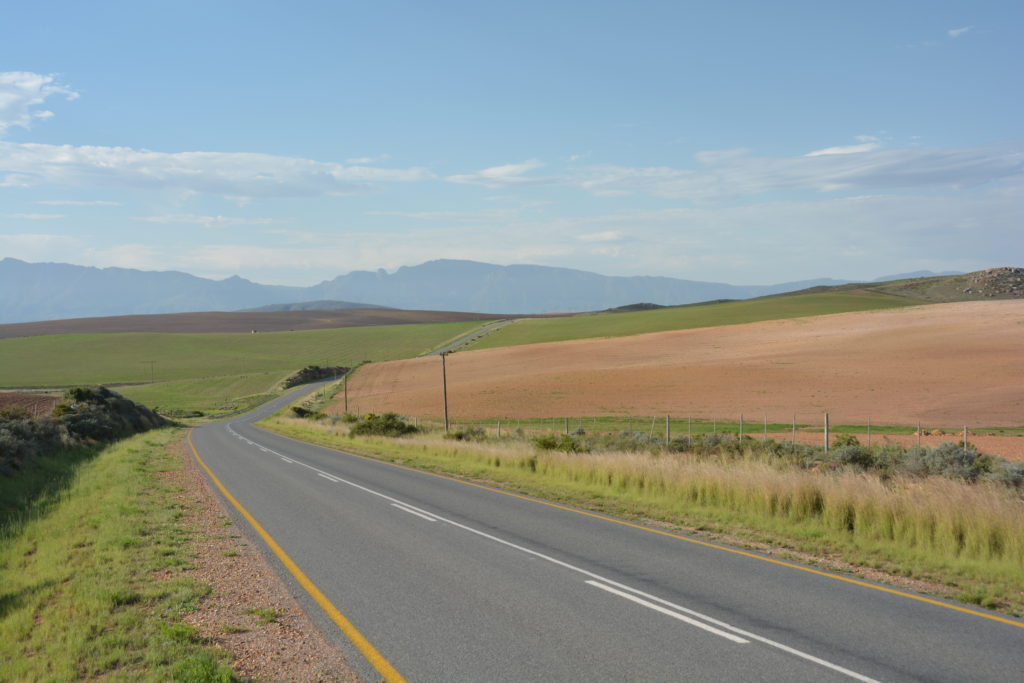
Wow – look at this, paved roads, irrigated fields, even telephone poles. We must be back in South Africa!
We camped our first night back in South Africa on a lake near Augrabie Falls National Park, the glowing sunset painting a beautiful 180-degree canvas of pinks, oranges and purples in our sky. To get there we passed through the substantial town of Upington which sits on the impressive Orange River. We followed the river to the national park, its banks lined with vineyards and orchards nurtured by irrigation from the river. We hadn’t seen this much green for a couple of months and enjoyed the new colours. And camping on grass instead of the persistent sand was a special treat!
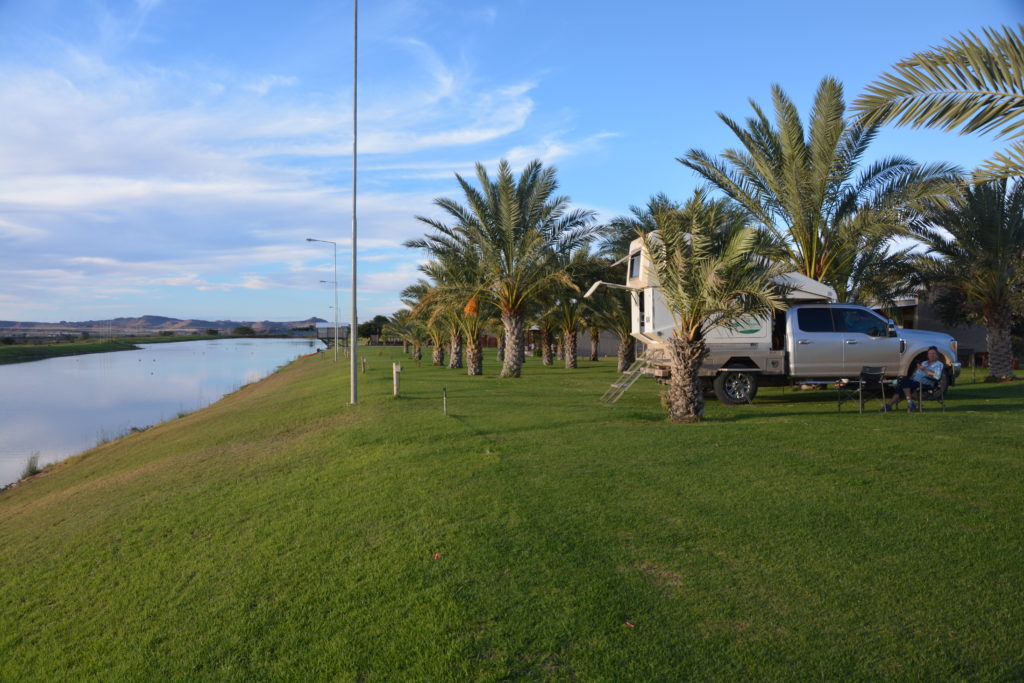
Our glorious campsite on the banks of a man-made lake made for water skiing and where we enjoyed a stunning multi-colour sunset
The next day we drove into Augrabie Falls National Park and spent the whole day exploring this wonderland. The star attraction of the park of course is the falls itself where the Orange River has carved a narrow shoot through the red rocks and falls 56 metres in a spectacular display of the power of water. We’re a sucker for even the smallest waterfall but Augrabie is absolutely world class and we took it in from different vantage points on the gorge’s edge.
We walked the 7.5 km (about 4.7 miles) Dassie Trail which followed the gorge for a short while before turning inland across the red rocks, jumping over flowing water and through deep rocky gullies. The walk featured a climb to the top of Moon Rock, a dome-like rock that provided great views of this rocky desert landscape.
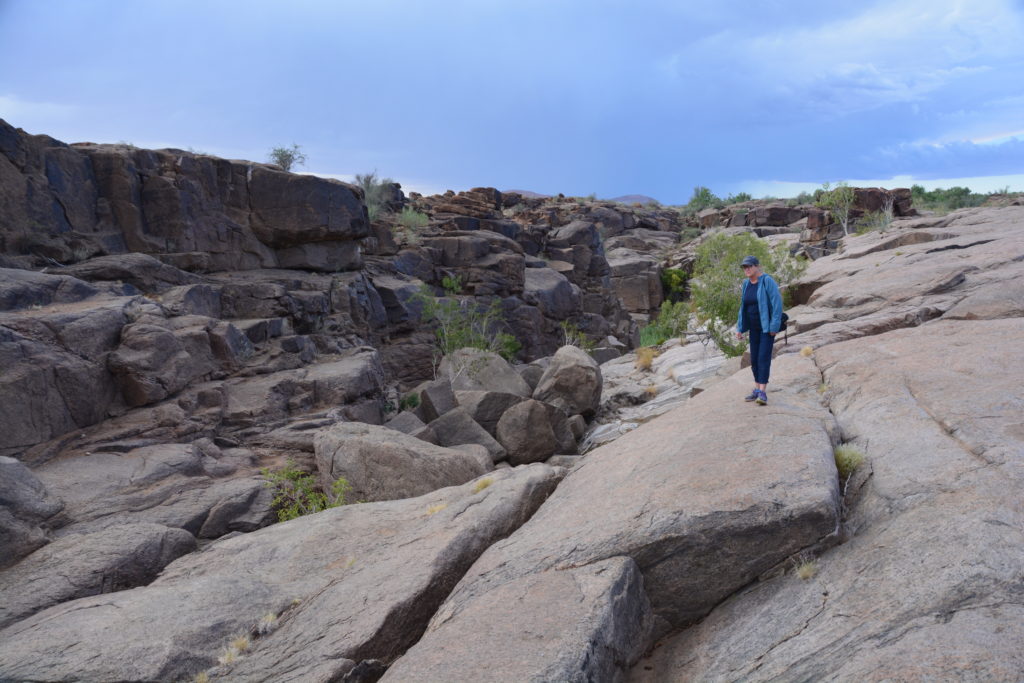
This walk gave us a taste of the river, the feeding creeks, the beautiful rock formations and even some new animals
We saw a few cool animals on this walk, including the Rock Hyrax, sort of a large tailless marmot, and two new types of mongooses, but the highlight of the walk was seeing three klipspringers, a small antelope that lives in remote rocky places. We had seen one klipspringer in Kruger National Park a few months ago but to see these rare animals up close on our walk was very special.
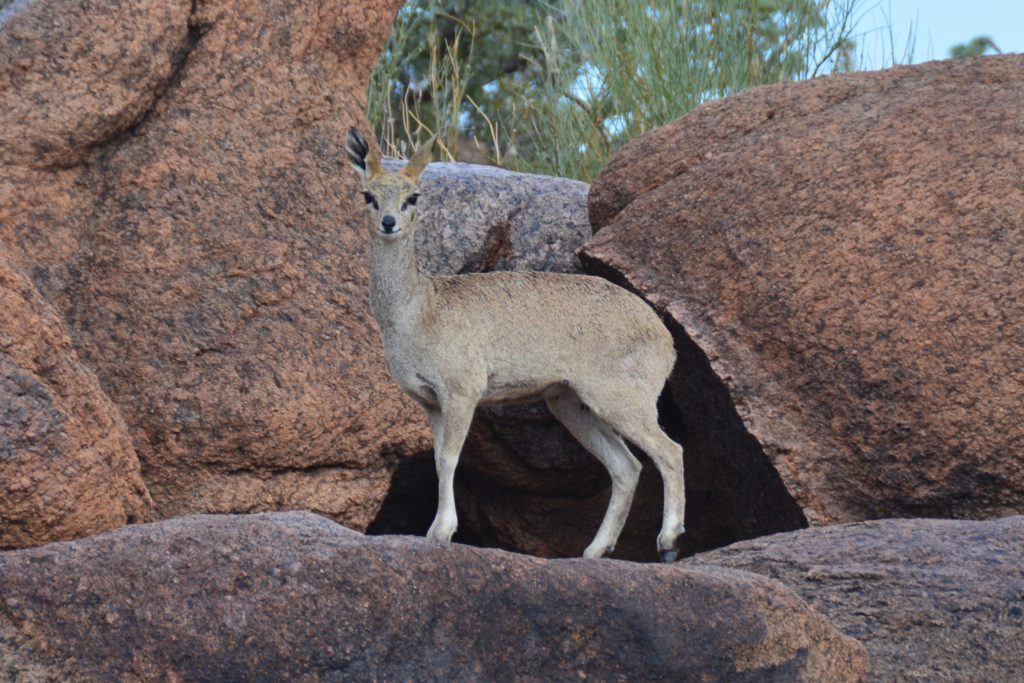
A family of Klipspringers, usually difficult to spot, allowed us to join them in their home habitat – this guy was particularly friendly
We also did a beautiful game drive through the rest of the park, lapping up the stunning red-orange rock scenery, spotting giraffes, a gemsbok and various other critters, before setting up camp in the park amongst all the school holiday South Africans. We didn’t make any progress on the day in our quest for Cape Town but never mind, we loved this national park and could have stayed longer.
The road west and then south from the national park continued on a long theme of cutting its way across flat dry barren desert, past and around the occasional small rocky mountain range, through a couple of scrappy communities. We stopped for supplies at the regional town with the cool name of Springbok and liked what we saw before more southward travel across more rocky and sandy nothingness. We were told Namibia hadn’t had rain for six years, and you could tell, but this part of South Africa wasn’t getting on any better.
Having left the Northern Cape and entered the Western Cape, we camped that night behind a modest lodge in a very small non-descript town before heading further south across this vast land the following day. Julie and I have often said that one of the best aspects of travel is the constant stream of surprises, some big, some small, almost all of them good surprises. Places, people, sites, history, flora and fauna are often different than we expected and we are constantly surprised by what we see and the experiences we have. We love the unknown and the unexpected.
The Cederberg Wilderness Area is one such place. We drove along the Oliphant River where an extensive irrigation and canal system had turned the desert into a rich land of healthy vineyards and green orchards (a surprise in itself!) and into the wilderness area at the base of a huge rocky mountain range that had been growing as we drove south.
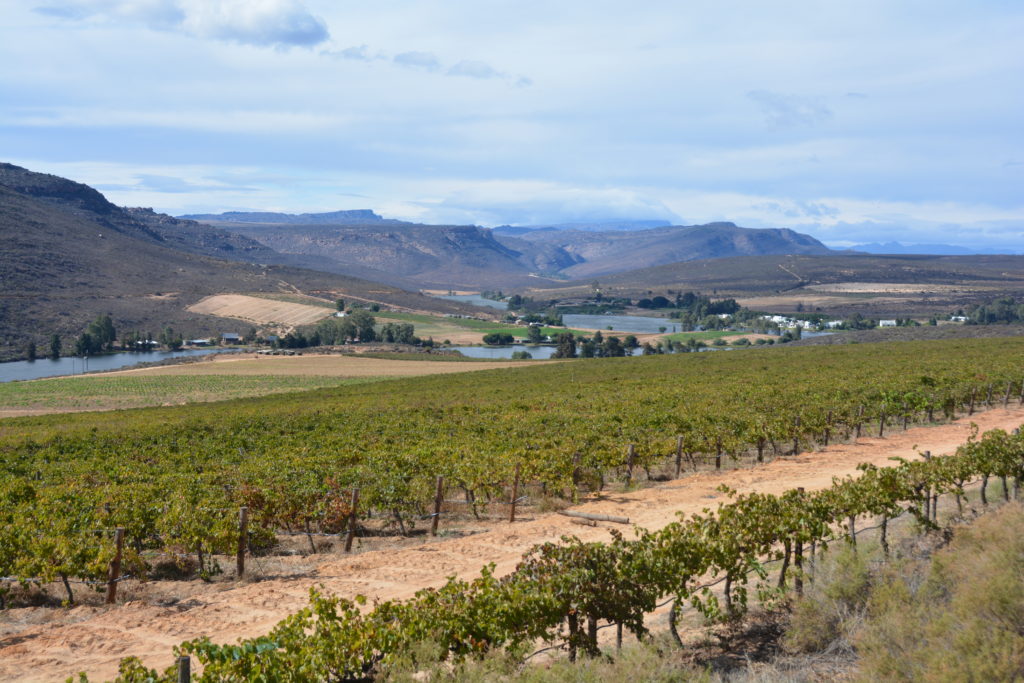
More irrigation, vineyards and a relatively lush valley, a colourful variety to the surrounding desert
The dirt road immediately became narrow and twisting as it weaved its way steeply up and over the pass and into the deep valley behind it. Besides being greeted by a thick grove of incredibly tall gum trees – that was a surprise! – we saw almost no plants above knee height. This was dry rocky terrain, steep and jagged valley walls closing in around us, our track ahead switchbacking up and over into the next valley.
Here the rock formations defied description and the laws of gravity. Ancient rocks piled on each other, tall pillars still standing, rows of rocks like soldiers standing guard. An imaginative child couldn’t have drawn it better. We made our way to the trailhead for a popular walk up to what is called the Maltese Cross and followed the trail up a steep mountain face through more rocky surprises and old gnarly protea trees. But eventually the cold wind and drizzly rain forced an early turnaround point and we headed back down to dryer ground.
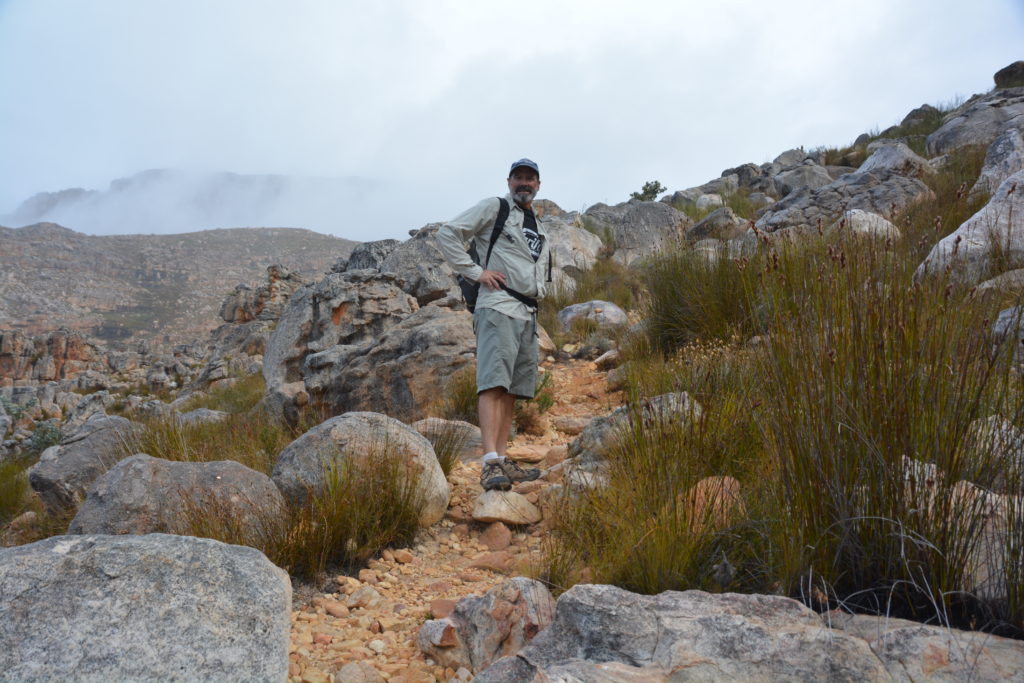
Our goal was a rock formation called the Maltese Cross but it was a fair old hike up to the first ridge
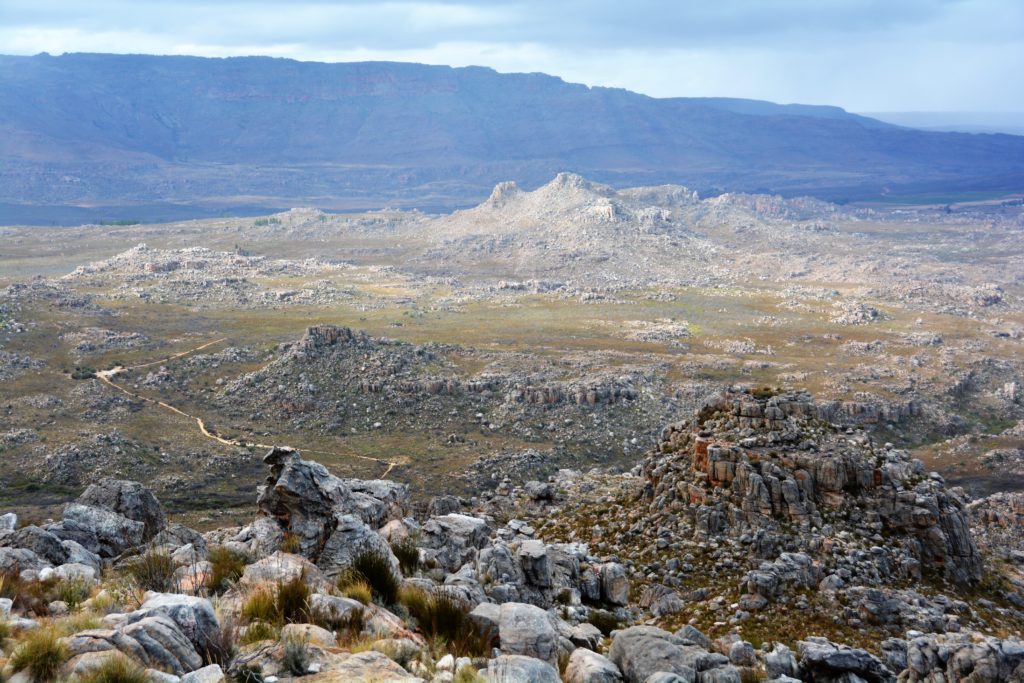
Great views from the top of our first ridge but the drizzle and cold whipping wind drove us back down
Up and over another pass on a private road took us to a fabulous vineyard/brewhouse/dairy farm where we camped for the night under huge old oaks set amongst the glorious scene of these rocky mountains all around us. The day had been full of wonderful surprises and ended around a big fire as the temperature dropped.
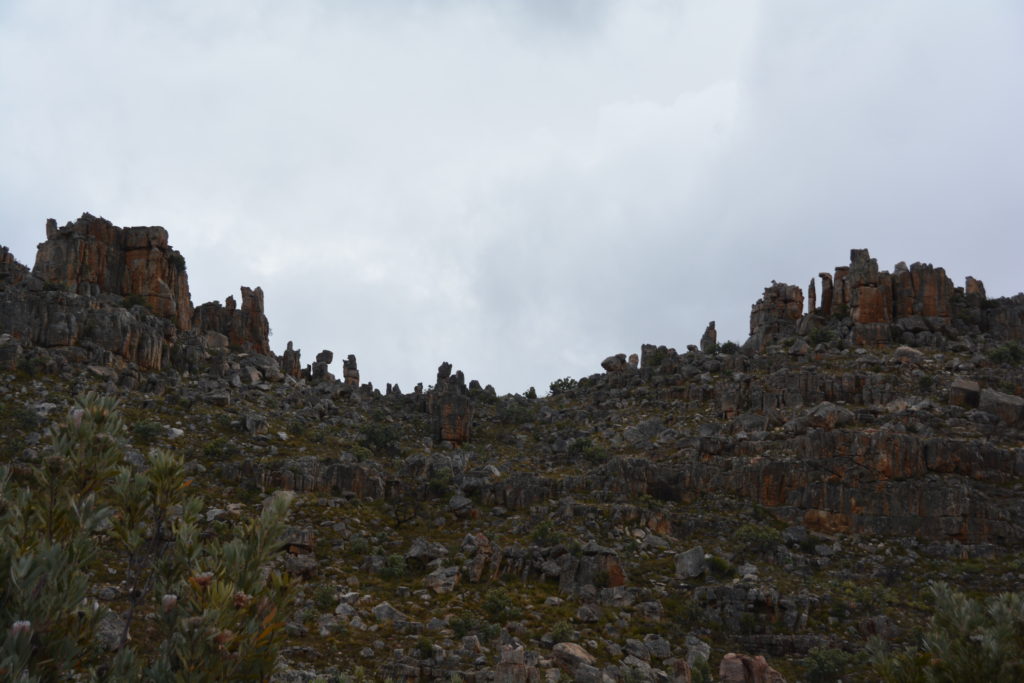
The landscape and rock formations were fascinating – especially this line of soldiers standing on the ridge
The next day we took a tip from the owners of the property and with a special permit drove along a dirt track until we came to a placed called Truitjieskraal (these Afrikaner names are killers). Here we found another range of exaggerated rock formations, sandstone carved by the wind and water over the millennia, now forming strange, gravity-defying and even humorous formations. We walked amongst these natural creations and also took in some amazing San rock art which is thousands of years old.
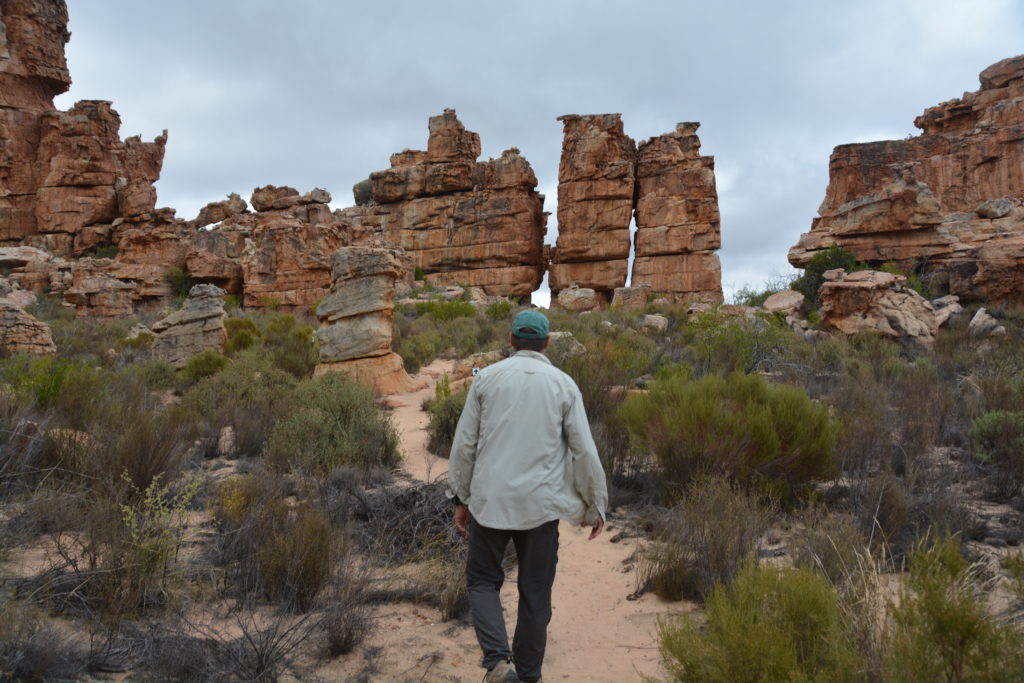
More crazy rock formations the next morning – one of the most entertaining walks we have done for some time
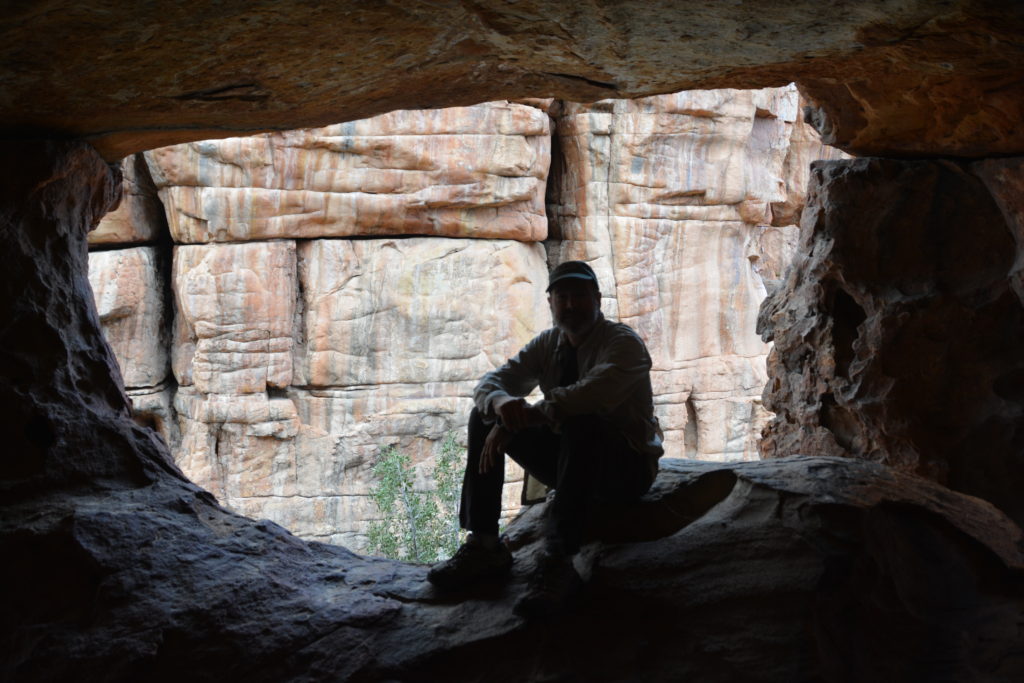
The crazy rock formations included large caves and overhangs which would have made perfect places to live all those thousands of years ago
But enough of this fun. We retraced our steps for almost two hours and slowly extricated ourselves from the Cederberg Wilderness Area until we hit the highway again and drove south through extended vineyards and orchards towards Cape Town.

We retraced our steps out of the wilderness area and were rewarded with spacious views of our road ahead
Cape Town is regarded as the jewel in South Africa’s crown, rich in history, cosmopolitan beauty, stunning beaches, and very liveable weather. It’s biggest attraction is Table Mountain, the tabletop mesa dominating the Cape Peninsula and we could see it looming on the horizon from more than 50 kilometres away. As we neared the city the traffic got heavier, the lanes on the highway increased, the city closed in on us and our sense of the spacious great outdoors of southern Africa was shattered.
We battled rush hour traffic, feeling like fish out of water, and made our way along the coast of False Bay to the east of the peninsula and in a cold strong wind whipping off the Atlantic Ocean we camped in a barely-protected campsite, those desert temperatures of 40 degrees long behind us. But Cape Town is cool and we were looking forward to its surprises.




















Comments
The Capes — No Comments
HTML tags allowed in your comment: <a href="" title=""> <abbr title=""> <acronym title=""> <b> <blockquote cite=""> <cite> <code> <del datetime=""> <em> <i> <q cite=""> <s> <strike> <strong>